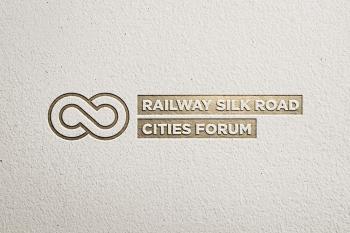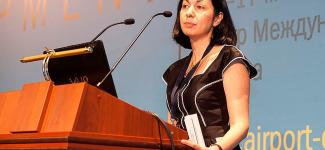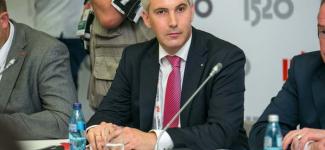Home › Projects › White Book › Eurasian Metro
Eurasian Metro

In the European Union nine main corridors of the Trans-European Transport Network (TEN-T) form the largest passenger continental metro — the “Eurometro”, the stations of which are cities of the Old World. At the same time, the “Chinese metro” is fully operable, every day more than two and a half million people move between station cities of China. In the next decade, the two systems will be connected by corridors of the New Railway Silk Road: on one side, the northern corridor — through Kazakhstan, Russian and Belarus; on the other side, the southern one – through Central Asia, the Caucasus and Turkey.
The future Eurasian metro system also includes ports, airports and intermodal centers, creating a ground logistic network from north to south and from east to west to connect seas (with routes that pass through them) and overcome mountains using tunnels.
Being an Italian and Piedmontese, I cannot fail to mention a statement of the creator of Italy, Count of Cavour. 15 years before the unification of Italy, he published in the Revue Nouvelle a chart of the future national railway network. At that time, Italy was still divided into many small, often conflicting states without trade relations, which would promote investments in infrastructure based on a rational economic assessment. In fact, Count of Cavour did not aim to meet the demand for traffic, which did not exist at that time, but to create, including through transport mobility, a new politic reality, unified Italy and a unique integral market, generating opportunities and exchange that was previously difficult to imagine. Conceiving the national railway network, he had predestined the main transalpine arteries: Moncenisio, Gotthard and Brenner decades before they appeared.
The TEN-T now offers a continental model, similar to that represented by Cavour 169 years ago at the national level. Its transport and communications (tangible and intangible) are determined as a trigger for integration and construction of a new Europe and, therefore, a new major market, unified on the domestic level and opened to relations with the whole world (close and far) by marine and ground routes, with special attention to Eurasia.
The prospect of exchanges is growing on a large scale and should be commensurate, first of all, with the new role of Eastern Europe and Asian Far East. New reality of the near future will be the East - West relations, from the Atlantic to the Pacific Oceans, with a modern interpretation of the Silk Road of Marco Polo, from Beijing to the Atlantic Ocean, with the Mediterranean playing a decisive role, and Italy geographically looks like a continental marina, which implies its historic mission – to be a bridge for the European dialogue with the East and North Africa.
The Vlast and MIR Initiative joint project – the White Book of METRO of the METR Region (Middle East, Europe, Turkey, Russia): Cities as Stations of the Future High-Speed Metro – marks a new significant prospect, which is not only of transport and commercial, but also of social, cultural and political nature.
The New Silk Road from China through Russia, the Caucasus-Anatolian Middle East and the Balkans does not end in Venice, but, passing through Turin, it connects all the cities of the Mediterranean corridor up to the Iberian Peninsula (with the possibility of future construction of an underwater tunnel under Gibraltar), creating a new system of relations with relevant Eurasian cities of new / old ways of Marco Polo.
In the world where globalist tendencies prevail and the time of process development is constantly decreasing, cities once again, as in the past, are beginning to play a central role they had to give up in the heyday of national states. Today, the fundamental importance of cities is revealed again, not only as guarantors of an individual’s attribution to a specific community as such, but as symbolic centers of vaster territories.
Cities are not only carriers of ineradicable needs and values of a local scale in a globalized world, but they can become protagonists of large-scale processes, "glocalization", combining the micro and macro levels.
European and Eurasian corridors will eventually require an active role of cities. For this reason, the inception of a new Eurasian Metro puts the cities in front of the need to unite in the permanent Forum of the Cities of the New Railway Silk Road, which would take over the tasks of development in the interest of local communities, given significant challenges of the modern world.
http://www.kommersant.ru/doc/2979277
Sign up for MIR initiative email updates
Sign up to receive monthly notifications about new arctiles published and other events on your email.
Other articles
 Michele Molinari
Michele Molinari
A vision for seamless transport in the METR region
 Thomas Maier
Thomas Maier
Transport infrastructure investments
 Olga Revzina
Olga Revzina
Legal aspects of international transport related infrastructure projects in the METR Region
 Will Judge
Will Judge
Connecting Cities: Global transit solutions
 Luis Castilla
Luis Castilla
Innovation for Sustainable Mobility Development in the METR Region
 Jan C. Harder
Jan C. Harder
